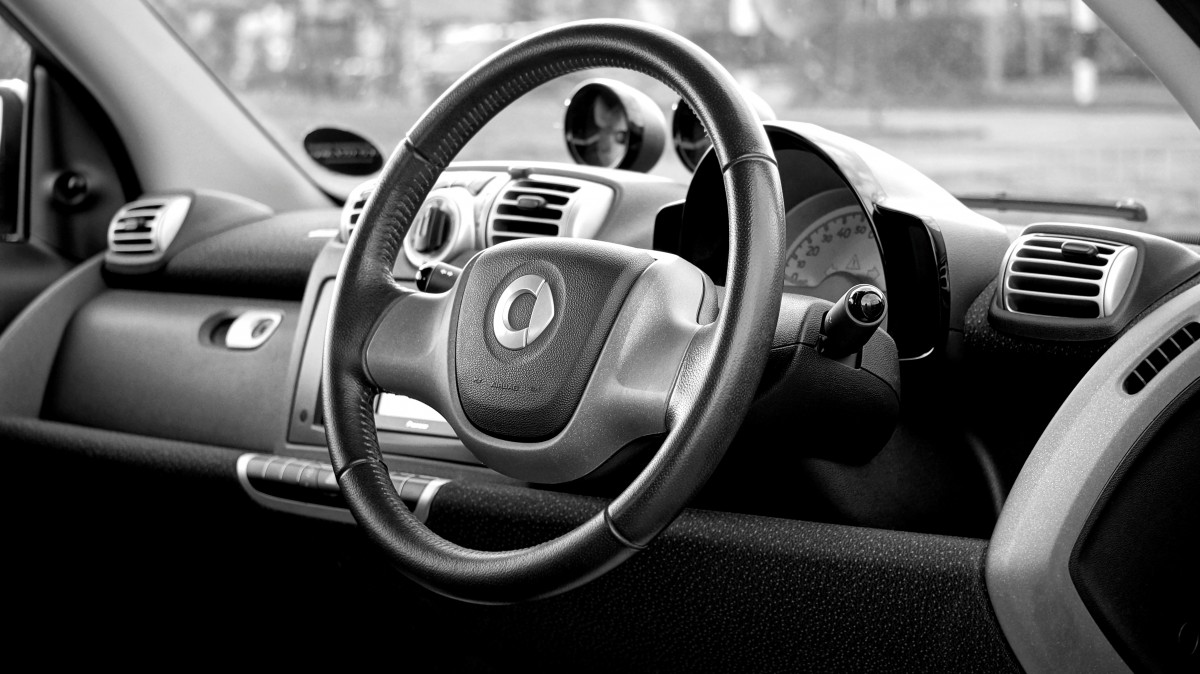Introduction: The New Co-Pilot in Modern Driving

The modern automobile has evolved far beyond a simple machine for transportation. It is now a sophisticated, interconnected digital platform featuring a growing array of intelligent technologies designed to augment driver safety and ease the burden of the daily commute.
At the forefront of this transformation are Advanced Driver-Assistance Systems (ADAS). These systems utilize an intricate network of sensors, cameras, radar, and cutting-edge software to constantly monitor the environment around the vehicle, anticipating and reacting to potential hazards much faster than human reflexes allow.
ADAS is not a single feature but a comprehensive suite of functionalities—from automatic braking to intelligent cruise control—that collectively work as a “co-pilot,” significantly reducing the probability and severity of collisions. The increasing prevalence of ADAS technology, now standard even in many economy-class vehicles, marks a pivotal step toward fully autonomous driving.
For the average consumer, however, the terminology can be confusing, blurring the distinction between true safety aids and mere convenience features. Misinterpreting a lane-keeping assist system as a hands-free driving mechanism, for instance, can lead to severe accidents, underscoring the necessity of informed usage.
Successfully leveraging the safety potential of ADAS requires the driver to maintain full situational awareness while integrating the system’s warnings and interventions seamlessly into their driving routine. This comprehensive guide will meticulously dissect the most common and vital ADAS technologies, categorize them by their core function (warning, intervention, or automation), and explain the underlying hardware that makes these intelligent actions possible.
By mastering the operation and limitations of ADAS, you empower yourself to significantly mitigate the risks of the road, enhance vehicle control, and transition safely into the future of automated mobility.
Part I: The Foundation of ADAS (Hardware and Data Flow)

ADAS systems function by gathering real-time environmental data through various hardware components and processing that information instantly.
A. Core Sensors: The Vehicle’s Eyes and Ears
ADAS relies on a blend of different sensor types, each serving a unique purpose in detecting the external environment.
- Radar (Radio Detection and Ranging): Radar sensors, often located behind the bumper or grille, emit radio waves to measure the distance, speed, and angle of objects, particularly vehicles, at medium to long range. They are highly effective in inclement weather like rain or fog.
- Cameras (Visual Identification): High-resolution digital cameras, usually mounted near the rearview mirror, are used to “see” the environment. They identify crucial visual data, such as traffic signs, lane markings, pedestrians, and cyclists.
- Lidar (Light Detection and Ranging): Although more common in fully autonomous prototypes, Lidar uses pulsed laser light to measure distances and create high-resolution 3D maps of the surroundings.
- Ultrasonic Sensors: These sensors, often found in bumpers, use high-frequency sound waves to detect close-range obstacles and measure the distance to objects, primarily used for low-speed parking assistance.
B. The Processing Unit and Data Fusion
The raw data collected by the sensors is useless without high-speed computation and interpretation.
- ECU (Electronic Control Unit): A dedicated, powerful electronic control unit processes the vast amount of incoming data from all sensors simultaneously.
- Data Fusion: This is the process of combining and cross-referencing information from different sensor types (e.g., confirming radar data with visual camera data). Data fusion provides a more robust, reliable picture of the environment than any single sensor could achieve.
- Actuators: Once the ECU decides a safety intervention is required, it communicates instantly with the vehicle’s actuators, such as the electronic power steering or the braking system, to execute the necessary action.
Part II: Warning Systems (Alerts and Notifications)

These are reactive systems designed to notify the driver of immediate, impending hazards, giving the driver time to take manual control.
A. Forward Collision Warning (FCW)
FCW is designed to detect a potential crash with a vehicle or object directly ahead.
- Function: It uses radar and/or camera data to continuously monitor the speed difference between your car and the vehicle in front.
- Driver Alert: If the system determines a collision is imminent, it provides a visual alert (flashing light on the dashboard) and an audible warning (loud chime or beep), prompting the driver to brake immediately.
- Limited Intervention: FCW does not brake the car; it is purely a warning system, designed to reduce the driver’s reaction time.
B. Blind Spot Monitoring (BSM)
BSM is a crucial tool for mitigating accidents during lane changes.
- Function: Radar sensors mounted on the rear corners of the vehicle detect vehicles traveling in the adjacent lanes that are not visible in the side mirrors (the “blind spot”).
- Visual Alert: When a vehicle is detected, the system illuminates a visible warning light on the corresponding side mirror or the A-pillar.
- Lane Change Warning: More advanced systems may provide a secondary audible or tactile warning if the turn signal is activated while a vehicle is in the blind spot.
C. Rear Cross-Traffic Alert (RCTA)
RCTA mitigates the risk of collisions when backing out of a parking space.
- Function: It uses rear-mounted radar sensors to detect vehicles, pedestrians, or cyclists approaching from the side while the vehicle is in reverse.
- Alert: The system provides an audible warning and flashes a visual indicator on the rearview camera screen or side mirrors, warning the driver of incoming traffic they cannot see.
Part III: Intervention Systems (Active Control)
These are semi-autonomous systems that actively apply steering or braking inputs to prevent an accident when the driver fails to respond.
A. Automatic Emergency Braking (AEB)
AEB is an enhancement of FCW and is one of the most significant advances in automotive safety.
- Full System Function: If the FCW system provides a warning and the driver fails to respond (or does not brake hard enough), the AEB system automatically applies the brakes to mitigate the speed and severity of the impact or to avoid the collision entirely.
- Pedestrian Detection: Many modern AEB systems integrate advanced cameras and software to detect and distinguish pedestrians and cyclists, applying the brakes if they suddenly cross the vehicle’s path.
- Insurance Impact: Vehicles with standard AEB often qualify for lower insurance premiums because this feature has been proven to significantly reduce the frequency and severity of low-speed accidents.
B. Lane Keeping Assist (LKA) and Departure Warning (LDW)
These systems ensure the vehicle remains centered within its designated lane.
- LDW (Warning): Uses a camera to monitor road markings. If the vehicle begins to drift out of the lane without the turn signal being activated, it provides an audible or visual warning (and often a vibration in the steering wheel).
- LKA (Intervention): This system actively provides subtle steering torque to gently guide the vehicle back toward the center of the lane. LKA is an assist feature and requires the driver’s hands to remain on the wheel at all times.
C. Evasive Steering Assist (ESA)
ESA provides assistance in high-stress, emergency maneuvers.
- Function: If the driver initiates an emergency evasive maneuver (swerving) to avoid an obstacle, the system can provide supplemental steering torque to help stabilize the vehicle and ensure the driver maintains control during the sudden swerve.
- Active Safety: This feature works in conjunction with the Electronic Stability Control (ESC) to prevent fishtailing and rollovers during rapid changes in direction.
Part IV: Automation and Convenience Systems
These systems take over certain aspects of driving under specific conditions, primarily reducing driver fatigue.
A. Adaptive Cruise Control (ACC)
ACC enhances traditional cruise control by dynamically managing vehicle speed based on surrounding traffic.
- Traffic Following: ACC uses radar to maintain a set speed and, more importantly, a pre-determined, safe following distance from the vehicle ahead.
- Stop-and-Go Capability: More advanced ACC systems include “Stop-and-Go” or “Low-Speed Follow” functionality, allowing the vehicle to automatically brake to a complete stop and then resume speed in heavy traffic without driver intervention.
- Driver Requirement: The driver remains fully responsible for steering and monitoring the system, as ACC cannot handle complex traffic intersections or sharp corners.
B. Lane Centering/Highway Driving Assist
These systems combine ACC and LKA to provide a higher degree of semi-autonomous driving on highways.
- Hands-On Automation: The vehicle simultaneously maintains a set speed/distance (ACC) and keeps the car actively centered in the lane (LKA).
- Driver Monitoring: These systems are Level 2 Autonomy and strictly require the driver’s hands to remain on the steering wheel. If the system detects the driver has removed their hands for too long, it will issue warnings and eventually disengage.
C. Parking Assist Systems
- Self-Parking: The most sophisticated systems can automatically control the steering, acceleration, and braking to guide the vehicle into parallel or perpendicular parking spaces, with the driver monitoring the process.
- 360-Degree Camera: Uses multiple cameras around the vehicle to stitch together a seamless, birds-eye view on the center screen, which is invaluable for maneuvering in tight spaces.
Conclusion: Driving Smart with Informed Awareness
Advanced Driver-Assistance Systems (ADAS) represent a powerful and indispensable layer of modern vehicle safety, utilizing data fusion from cameras, radar, and lidar to dramatically mitigate collision risks. These technologies function across a spectrum, moving from pure warnings—like Blind Spot Monitoring—to active interventions—like Automatic Emergency Braking—and finally to convenience automation such as Adaptive Cruise Control.
Successfully maximizing the protective benefits of ADAS demands that the driver views the system not as a replacement, but as an ever-vigilant co-pilot; full human attention and hands-on readiness are mandatory, especially with Level 2 semi-autonomous features. Understanding the specific limitations of each system and promptly responding to warnings are crucial for preventing accidents and maintaining vehicle integrity.
By embracing informed awareness and integrating these sophisticated aids responsibly, the driver significantly reduces exposure to risk, enhancing control and ensuring a safer journey toward the future of mobility.













